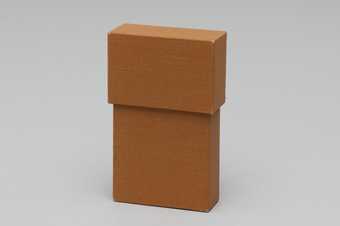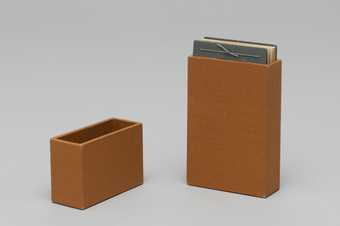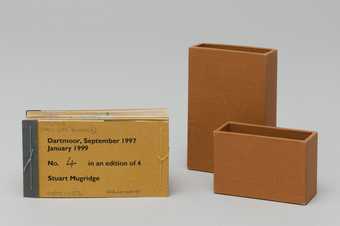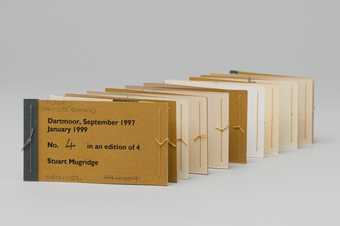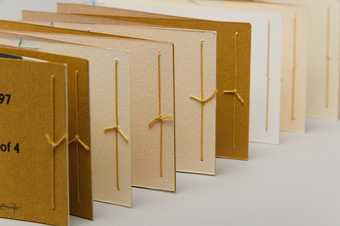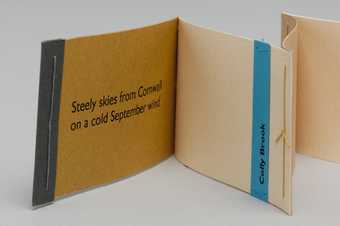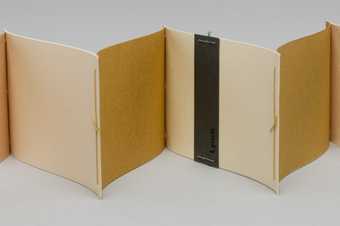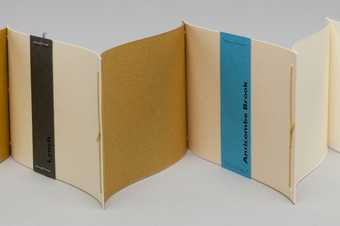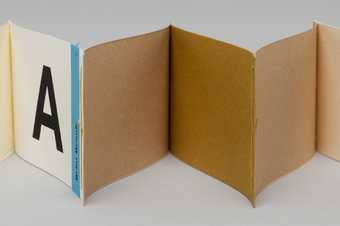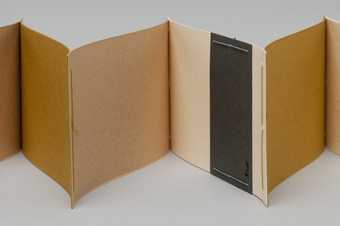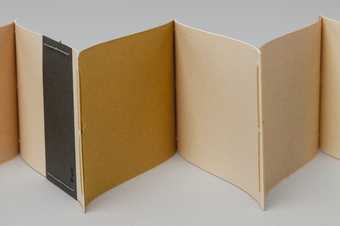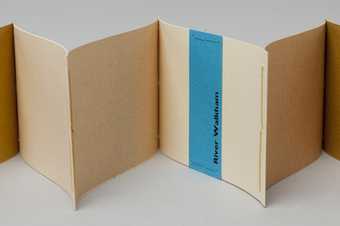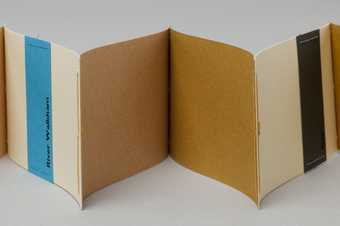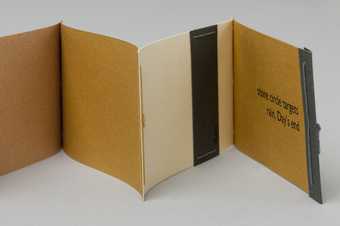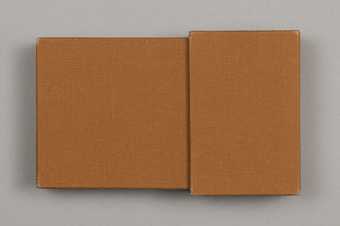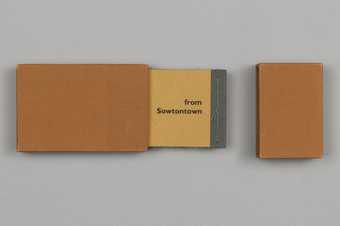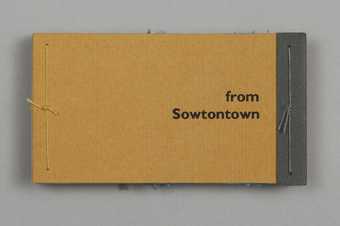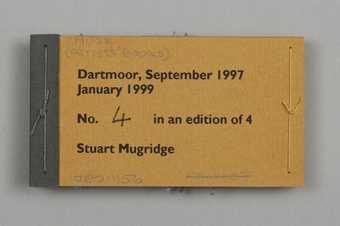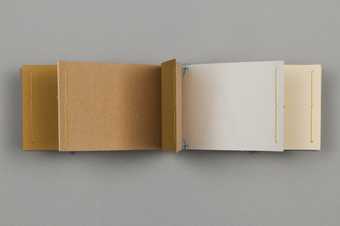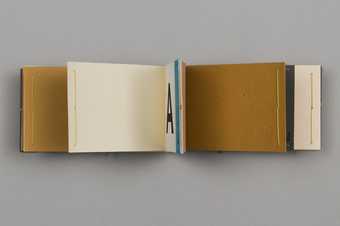Stuart Mugridge born 1971
from Sowtontown 1999
Tunbridge Wells: Stuart Mugridge, 1999
Edition size: 4
Tate Library’s copy: number 4
from Sowtontown is housed in a thin, brown cloth-covered rectangular box with a lid at one end. The book is small, comfortably sitting in the palm of the hand. When opened it reveals a concertina of pages that flows easily between the reader’s hands, showing each opening or, when stretched out, reaching over 1.5 metres. The pages consist of different coloured sheets of textured paper delicately stitched together at each edge. The right-hand pages of most of the openings have strips of blue or grey papers stitched to them.
The work represents a 22 mile circular walk on Dartmoor in September 1997. The cream, ochre and tan papers portray the earth colours of the moorland, while the blue and grey papers indicate geographical features. Blue represents rivers or streams while grey depicts tors (rocky pecks). The features are named, so that it could be possible to reconstruct the walk on a map and then in reality, following it from Sowtontown, near Tavistock, via Colly Brook, Lynch Tor, Amicombe Brook, Brim Brook, Fur Tor, River Walkham and Cox Tor, and then returning to Sowtontown. The A that appears on the same page as Colly Brook represents the presence of a striped pole with a sign bearing the letter A. This is perhaps associated with military live firing ranges close by.
The text begins with the couplet ‘Steely skies from Cornwall | on a cold September wind’ and ends with ‘Stone circle targets | rain. Day’s end’. When the reader comes to put the book back into the box, the precision of the construction is evidenced by the two grey slivers of paper stitched around the fore-edges of the front and back cover that allows the book to sit comfortably on the sides of the box. Through the use of coloured and textured paper Mugridge utilises the book’s materials to help convey the idea of the work.
The artist has written: ‘Over all, the work appears like a ruler or tape measure and underlines the importance of pace and measure in my work at this time. My work was very much about the physical act of walking with what I encountered beginning to show up like blips on a monitor screen. Slowly the scene or place has become more important than the way in which I encounter it.’1
This book, like much of Stuart Mugridge’s book practice, is part of the tradition of artists making books in connection with and inspired by nature, landscape and walking. Other artists creating books exploring these subjects include Richard Long, Hamish Fulton, Helen Douglas, Thomas A. Clark and Andrew Norris. Tate Library holds a number of other books by Mugridge, ranging from early works such as Steeplechase (1993), based on another circular walk, where squares cut from the pages allow the reader to be drawn through the book and on to the next church steeple, to Sea. II, Depth Finder (2004), which again uses coloured papers, this time to explore the sea.
Maria White
May 2013

